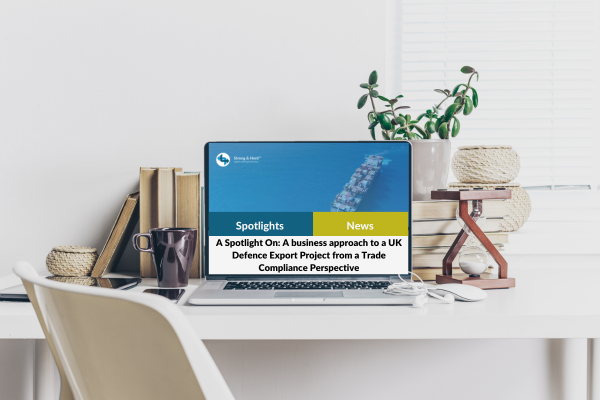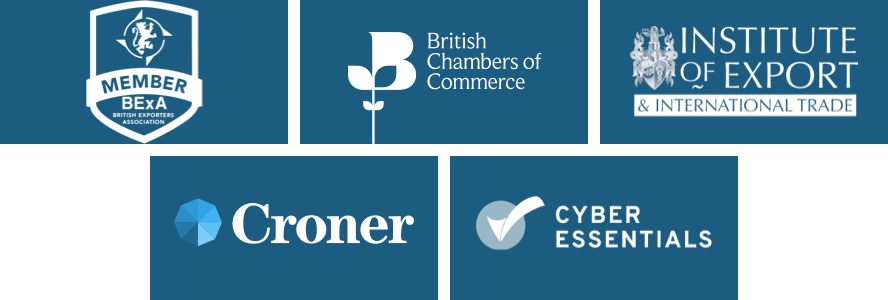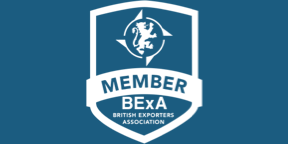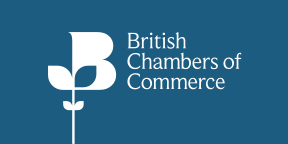BY:
SHARE:

With the UK government set to increase the UK Defence budget against the backdrop of growing defence and trade tensions, there are rising opportunities for smaller businesses to sub-contract to the larger defence contractors, or if their business is niche, contract directly with the MoD.
If a business has never considered a defence contract and an opportunity arises, or if the company generally has limited experience in a cross-border supply chain and wants to get started, here are some pointers on managing trade compliance as a project:
From submitting a response to a request to tender, working the supply chain, and delivering.
Larger MoD projects are generally managed by the more prominent players in the defence sector, such as BAe, Rolls-Royce, Thales Group and Leonardo, to name a few. This doesn’t mean that SMEs are excluded. The salient point is for a business to understand its role in a defence project and plan for success. Trade compliance will be central to that success.
Building the contract and project definition from a trade compliance perspective:
Define:
- Goods from a trade compliance perspective. Data must include tariff classification, origin, and value of goods.
- Goods from a military or controlled goods perspective, and what licences would be needed to fulfil contractual obligations.
This will include any other country controls related to the goods on your inventory, an example being the US International Trade in Arms Regulation (ITAR) or Export Administration Regulations (EAR) controls.
- Any security documentation or specific security obligations to be met to support the contract schedule, including but not limited to: F680, F1686 and project security requirements flowed down in a contract Security Aspects Letter.
- Where the goods will be delivered and any delivery term (Incoterm®) used to make deliveries. This will influence any export licence requirement, and which party will be responsible for export licence provision, declaration, and regulatory audit.
- Logistics. Are there any restrictions within the contract regarding specific delivery schedules or methods that may influence goods being delivered other than through anticipated delivery routes? For example, controlled goods will be delivered to a site in one country where the nearest airport is in a third country.
- Procurement: The goods the business purchases overseas or as part of a contract supply chain must be interpreted in Customs terms. This will include the tariff, origin and value of the goods, with the Incoterm® for delivery clearly managed and visible on any contract or purchase order.
A business may purchase controlled goods from another country, subject to export licences from that consignor country. Lead time for an export licence could add lead time to project delivery and affect the business assessment of contractual risk
- Goods imported for manufacturing. Raw materials for manufacture in the UK and subsequent re-export may require compliance evidence in the importing country regarding the origin of those raw materials.
Re-exported manufactured goods may also be subject to other regulatory reporting, such as Carbon Border Adjustment Mechanism (CBAM) reporting.
- The potential use of Customs Special Procedures for the import of goods that will be subject to subsequent re-export.
Inward Processing measures could be employed where raw materials are imported for manufacture and re-export, or goods are returned for contractual repair.
Customs Warehousing could be used to import larger quantities of raw materials to be kept available for the duration of longer projects. Materials could then be transferred to an IP authorisation for processing before export.
If goods are being imported for test and return, consider using Temporary Import measures to manage import VAT.
Employing Customs Special Procedures may not be cost-effective, but should be considered.
Top Tip: A UK company that imports goods without the intent for the goods to belong to that importing business would need to pay VAT on import for those goods. Import VAT under these conditions is not recoverable and must not be imported using Deferred or Postponed VAT Accounting (PVA) processes.
- Any support contract considerations, including guarantees and warranties. Goods repair clauses may necessitate the use of Customs measures where goods are imported for repair or replacement.
Regulatory definition: What is important and why
Origin: Accurately declaring the Origin of goods on a Customs declaration is a regulatory requirement. The origin of a good must not be assumed.
Origin is often unrelated to the country from which the goods were consigned. This is an easy mistake to make. Goods origin requires compliance evidence, whether by declaration or supporting origin documentation.
Delivering goods nationally will also require confirmation of the goods' origin if the goods further down the supply chain are for export, for example, international sanctions on controls relating to metals of Russian origin. Confirmation of originating country will become increasingly important within the supply chain.
Fluctuating US Tariff measures may require a detailed breakdown of the origin of all materials used in a good for import to the US. This will likely be subject to change, but if the data is unavailable at import into the US, the import will wait at US Customs with charges accruing until the required compliance data is submitted to support the Customs declaration.
Goods Definition: Accurate classification of goods moving across borders is essential.
A sound understanding of the UK Global Tariff and how it works is necessary on import, as duty and import VAT are calculated using the Tariff code presented at import. The importer's obligation is the correct declaration of a Tariff code subject to audit.
If goods are designed or adapted for military purposes, or already carry a control rating when procured, they will require a licence to export from the UK.
A Tariff code may carry a dual-use classification flag that must be addressed before goods are exported. Dual-use goods require an export licence, and accurate classification against the Strategic Export Controls list must be established.
How the classification was arrived at should be saved for audit. If the classification identifies that a control does not apply, the information supports the use of a positive coding on the export declaration to this effect.
Taking a broad view of a contract requirement from a trade compliance perspective makes good business sense. Removing the segmented departmental approach and replacing it with a broad technical definition of the contract requirement from a trade compliance perspective can save the business a lot of time, effort and money.
Understanding goods’ definition from a trade perspective is essential when manufacturing or presenting goods as a compliant export. Ensuring accurate goods definition from both a Customs and a control perspective has never been more critical.
OneCall™ Email assistance as and when required; A one-call solution for all your import, export and customs enquiries. Export help. Import help. Customs help.
Stay informed about customs and international trade matters by subscribing to our OneCall™ service. This comprehensive offering includes a dedicated email helpline for support, timely practical updates direct to your inbox (Did You Know?), monthly UK Customs & Trade Briefings and access to an interactive members' area with an exclusive community for our subscribers.
International Trade Updates & Spotlight Newsletter
Subscribe to our free information emails covering international trade topics...
MORE INDUSTRY INSIGHTS...








